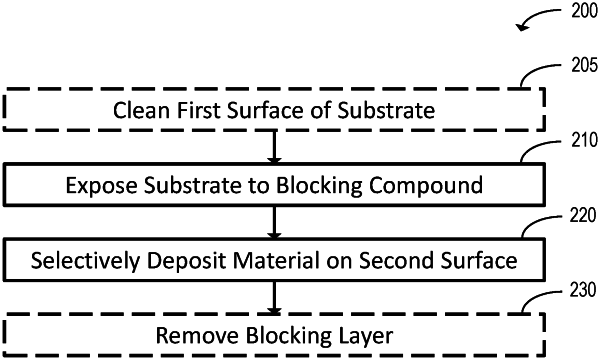|
1. A method of selectively depositing a blocking layer, the method comprising exposing a substrate comprising a metallic material having a first surface and a dielectric material having a second surface to a blocking compound to selectively form a blocking layer on the first surface over the second surface, the blocking compound comprising a 4-8 member heterocyclic ring comprising at least one heteroatom and at least one substituent group selected from alkyl or aryl groups comprising 1-8 carbon atoms, wherein the heterocyclic ring is a 2-aminomethyl heterocycle.
|
